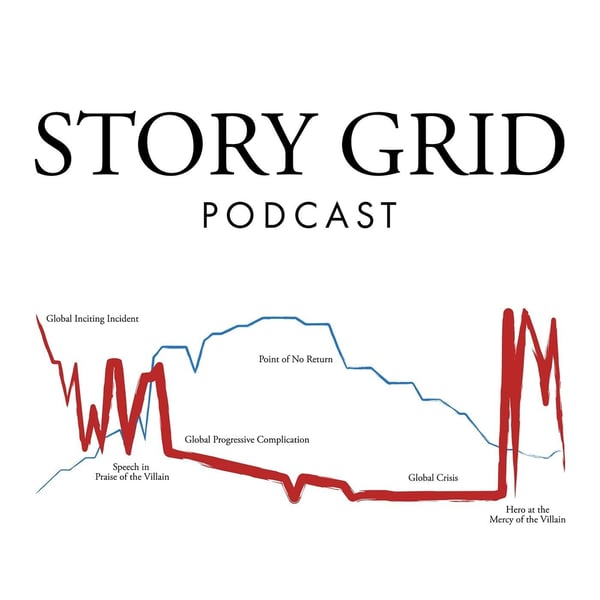Story Grid Trinity for Nonfiction
Story Grid Writing Podcast
Shawn Coyne
4.8 • 767 Ratings
🗓️ 17 June 2021
⏱️ 22 minutes
🧾️ Download transcript
Summary
Transcript
Click on a timestamp to play from that location
| 0:00.0 | Hello and welcome to the Storygrid podcast. This is a show dedicated to helping you become a better writer. |
| 0:06.7 | I'm your host, Tim Graal, and I'm a writer in the Storygrid universe. Joining me shortly as Sean Coyne. |
| 0:12.2 | He is the creator of Storygrid, the author of the book Story Grid, and an editor with over 30 years experience. |
| 0:18.7 | In this episode, we got a question in about how to apply the |
| 0:23.2 | StoryGrid Trinity to nonfiction works, specifically memoir. I know a lot of you listening, |
| 0:29.2 | write memoir or working on a memoir, because we often get questions around memoir. And so I think |
| 0:34.8 | you'll really enjoy this episode because we dive back into kind of the three |
| 0:39.5 | parts of the Storygrid Trinity and we look at how this affects nonfiction writing. So that's what |
| 0:46.2 | we're going to cover today. So let's jump in and get started. So Sean, we got a question in this |
| 0:53.0 | week from Consetta. Follow up on the episodes we did about |
| 0:57.6 | the Trinity, the StoryGro Trinity. And she asked, how does the Trinity apply to nonfiction, especially |
| 1:05.5 | memoir? Oh, well, I'll do a broad canvas survey here. I mean, that's like a three, four-day seminar. But let me just kind of break it down into the big abstract concept. So just to briefly outline my conception of nonfiction is I have four categories of genre of nonfiction, |
| 1:29.4 | right? So the first one I have is academic nonfiction, which is really for a very targeted |
| 1:35.3 | audience of specialists. And so you don't really have to worry so much about entertaining them. |
| 1:41.1 | You're just trying to get the logos out there. You're trying to get the new |
| 1:45.0 | information to those people out there in as efficient way as possible so that they can integrate |
| 1:51.0 | it into their thinking. So you have academic nonfiction. So it's very wonky, high resolution |
| 1:57.5 | stuff at very, very deep levels of analysis. The second is how to. How to is a broad |
| 2:04.6 | category where you're trying to engender a new skill in third parties that you're never going to |
| 2:12.5 | meet. So what you want to do is boil down formulaic procedures and protocols in order to learn a new skill. |
| 2:20.8 | So how to bake a cake, how to garden, right? |
| 2:24.3 | How to sell. |
... |
Please login to see the full transcript.
Disclaimer: The podcast and artwork embedded on this page are from Shawn Coyne, and are the property of its owner and not affiliated with or endorsed by Tapesearch.
Generated transcripts are the property of Shawn Coyne and are distributed freely under the Fair Use doctrine. Transcripts generated by Tapesearch are not guaranteed to be accurate.
Copyright © Tapesearch 2025.

